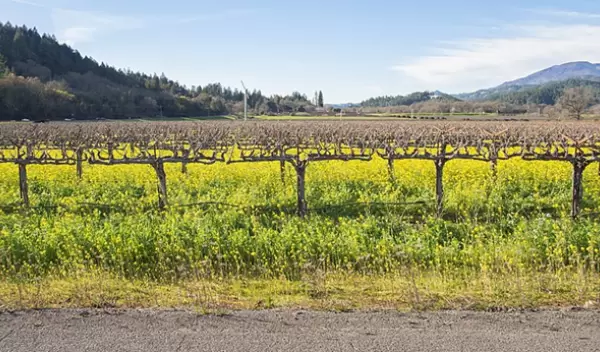
Toward more sustainable wine: Scientists can now track sulfur from grapes to streams
Each week during growing season, California winemakers coat their precious grapes with sulfur fungicides to prevent powdery mildew infection. It's an effective defense against a potentially crop-devastating disease in one of the state's largest industries.
But when it rains and the fungicide is washed away, where does all the sulfur go?
U.S. National Science Foundation-supported research by University of Colorado Boulder scientists shows that agricultural sulfur has a unique fingerprint that can be traced from application to endpoint. "The development of this sulfur stable isotope fingerprint is an important step toward quantifying the biogeochemical consequences of human manipulation of the sulfur cycle," said Julie Pett-Ridge, a program director in NSF's Division of Earth Sciences.
Published in Environmental Research Letters, the study paves the way to protect waterways downstream from unintended impacts of anthropogenic sulfur application.
"We found that you could see the effect of vineyard agriculture in the Napa River when vineyards are only 11% of the land cover in the whole watershed," said Eve-Lyn Hinckley, senior author of the study. “It's a very stable fingerprint for us to trace and understand what ultimately happens.”
Mined from mineral deposits around the world, agricultural sulfur is used both as a fertilizer and as a pesticide. In 2020, it surpassed the burning of fossil fuels as the largest human source of sulfur in the environment. Before then, sulfur in the atmosphere was pervasive -- a main component of what became known as acid rain.
Many farmers now heavily compensate for this reduction in atmospheric deposits, amping up their use of sulfur fertilizers. Wine farmers today apply far greater amounts of sulfur than what would fall from the sky during the era of acid rain, according to Hinckley.
This bright yellow chemical is also the top pesticide used in California agriculture, mainly in vineyards, making them a great place to understand how it moves through soils, where it ends up and its possible consequences.
Researchers suspect it could create problems downstream by mobilizing heavy metals like mercury in wetlands, releasing toxins that threaten humans and wildlife.
To pull apart the atmospheric and human-applied sulfur, the scientists worked like forensic detectives. All over Napa Valley, they took samples to measure the concentrations of sulfur from its path through soil to surface water. As they went, they analyzed the chemistry of the sulfur and found a unique chemical signature of the agricultural sulfur.


